As the Christmas ad tradition took off, supermarkets’ efforts became homogenised. This year, they’re taking risks on quirky creatives
How bizarre, how bizarre” is the soundtrack to Tesco’s long-awaited Christmas ad, which aired last weekend. It’s also a not-unreasonable audience reaction to some of this year’s festive marketing from major grocers and retailers.
However, the oddity of some efforts – singing oven gloves, a pooch-hungry venus flytrap, Sophie Ellis-Bextor taking a blowtorch to a stack of Christmas cards – is very likely a calculated gamble, according to Eleanor Pick, senior strategist at CreativeRace, a marketing agency that works with Asda, Greggs and Meatless Farm. “Taking a risk can bring about cut-through and attract attention,” she says. “Something different can be the key to standing out at Christmas.”
Cutting through is getting harder and harder. Retailers and brands are set to sink a record £9.5bn into advertising this Christmas, a near 5% increase on last year, according to the Advertising Association. With the festive advertising season starting earlier and earlier, “the need to stay top of mind becomes imperative, so doing something ‘out there’ becomes the strategy”, Pick adds.
Indeed, with many major retailers having ditched long-running creative partners for new agencies this year, many are being bolder and perhaps even a little bonkers in their advertising approach.
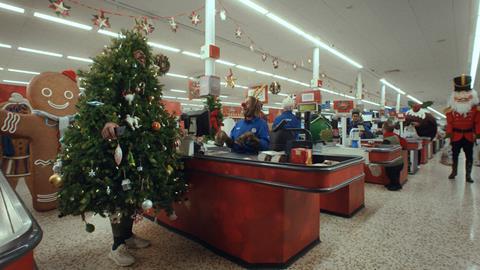
But does trashing Christmas tropes work at a time of celebrating tradition? Does ‘out there’ land with customers? And does any of it make a difference at the tills anyway?
Over the past decade, John Lewis’s work with its long-time creative partner Adam&EveDDB had, for some, set the standard for what a Christmas ad should be.
“It defined the 2010s Christmas ads with some truly brilliant work,” says Jon Evans, chief customer officer of ad audience testing platform System1, where John Lewis’s ‘Excitable Edgar’ ad of 2019 secured a maximum score with surveyed audiences.
It’s been so influential that, come 2023, ads are frequently made in the same style, meaning they can feel homogenised and indistinguishable.
“I have conversations every year where someone attributes an ad to the wrong brand, and you can see why,” says Graeme Noble, chief creative officer at TMW Unlimited, which has devised campaigns for Diet Coke, Absolut Vodka and Lynx. “The risk for the pretenders to [John Lewis’s] throne is that there’s a danger in using someone else’s recipe for success. Without naming names, there’s a few this year who have stuck to the tired and tested formula of putting kids, old people or animals in front of slightly cloying, twinkling cover versions in the hope of jerking a few tears,” he adds.
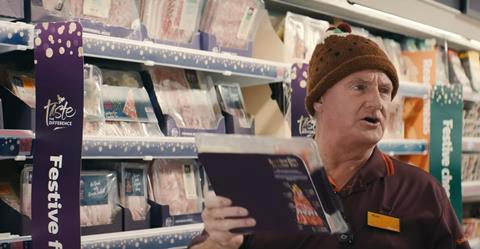
Taking the reins of a movie franchise
Earlier this year, the John Lewis Partnership (JLP) switched creative marketing agencies for the first time in 14 years, to Saatchi & Saatchi. For its first JLP festive ad – which Saatchi & Saatchi chief creative officer Franki Goodwin likened to “taking the reins of a movie franchise” – it engaged French collective Megaforce to direct. The group is renowned for its edgy output, such as a Rihanna music video in which the star ends up naked and blood-drenched in a trunk full of cash. That John Lewis’s 2023 ad is something of a departure is clearly by design.
The result has paid off in breaking through the noise, with cutesy characters replaced by a carnivorous plant. But at the same time, it still feels like a John Lewis ad, says Jo Arden, chief strategy officer at Ogilvy UK, which works with Sainsbury’s, Boots and Tesco.
“Many brands and their new agencies would have been tempted by a total do-over, but there’s a lot about this year’s ad which is in the John Lewis playbook. Common sense and creativity have combined to give us a new spin on an old tradition.”
According to System1 analysis of audience responses, the ‘Snapper’ ad is the retailer’s most effective in three years.
“It’s not a supermarket ad that will ‘win Christmas’. It’s their sales figures”
Nicky Bullard, group chief creative officer at MullenLowe
So, breaking or refreshing your own traditions can reap results. But if you start attacking everyone else’s, you can expect some kickback. M&S experienced this with its clothing ad this year, in which celebrities violently denounce festive staples like Christmas cards, Elf on the Shelf, children’s costumes and board games.
“On the one hand, you want to bring something new to the table – challenge a tradition, a behaviour, a way of looking at the season,” says Anna Vogt, chief strategy officer of VMLY&R, which works with Wendy’s, Starbucks and Uber Eats. “On the other hand, take something old and familiar away, mess with it or kill it all together and you’re in deep trouble. Even if we grow tired of cumbersome festive traditions and chores, we love to moan about them. Remove that pleasure and you’ve killed a little bit of what makes Christmas so unique.”
The ad – created by another newly appointed agency, Mother – has been edited multiple times since launch to remove the more ‘offensive’ scenes. By comparison, its M&S Food ad, which revives the Dawn French-voiced fairy of previous years – albeit with the addition of other celebrity-voiced characters – scored the highest possible rating among audiences in System1 analysis.
Striking the right balance
“The Christmas brief can be a poisoned chalice,” says Nicky Bullard, group chief creative officer at MullenLowe, which has worked with Persil, Magnum and Co-op. “I think agencies have to dare to be different, as it was all getting so samey, wasn’t it?”
In the quest to strike the right balance between quirky and familiar, one that has seen it pay off is Morrisons. Also using a new creative agency having appointed Leo Burnett last December, it topped the System1 ratings with an ad featuring animated oven gloves singing 80s ballad Nothing’s Gonna Stop Us Now.
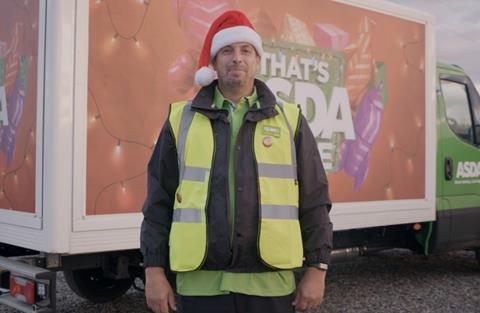
“Human brains are wired to ignore sameness and pick out difference, so a distinctive approach will always stand out,” says Camilla Yates, strategy director of creative agency Elvis, which works with Cadbury, Doritos and Tate & Lyle.
For Yates, Morrisons’s ad presents “a joyful celebration of hope and togetherness, which neatly brings product into the narrative by celebrating the behind-the-scenes efforts that go into creating Christmas food”.
And crucially, it’s funny. Earlier this year, Kantar announced “the use of humour in advertising is back”, following two decades of steady decline, having found a third of ads in 2023 used humour in some way.
“People have realised it’s missing,” says Lynne Deason, head of creative excellence at Kantar UK. “During covid we had a lot of ‘sadvertising’. While advertisers were trying to empathise, it actually made people feel worse. You can land serious messages and still build a credible, strong, trusted brand using humour, and people are really embracing that again.”
Read more:
-
Watch all the supermarkets’ Christmas adverts 2023
-
Who won the Christmas ads in 2023?
-
Quality Street releases Christmas rap video starring John Barnes
-
Co-op ditches Christmas ad in favour of community donation campaign
Others have taken a more radical approach. Namely Iceland, whose strategy is to make a virtue of not having an ad. Executive chairman Richard Walker said the “millions” saved would be invested in supporting customers, which he described as “a no-brainer for us”.
“This is really clever, as it reinforces their pricing position in the market and paints them as consumer champions,” says Rik Moore, managing partner of strategy at media planning agency The Kite Factory, which has worked with White Claw and Little Freddie. “By claiming this ground, they’ve gained first mover advantage, so anyone else would just be copying if they tried to follow suit. This sets Iceland as a real challenger brand disrupting the category norms.”
Iceland’s strategy also poses a question to its rivals: “Is a celeb-laden tinsel fest the best use of a brand’s time, money and energy given the ongoing cost of living crisis and the appalling news from overseas?” asks Richard Exon, founder of Joint, the creative agency behind TV campaigns for Amazon, Kettle Chips and Thatchers campaigns.
No marketing at a time when it’s expected is, of course, a form of marketing. But how effective has the move been? It garnered much media coverage – but only fleetingly.
“While getting full marks for difference, this feels somewhat unambitious,” Exon adds. “It’s simply not credible that a company of Iceland’s size can’t do both – support customers with low prices while simultaneously funding a Christmas advertising campaign. Iceland is undeniably missing an opportunity its competitors are taking.”
Deason agrees. “You’ve got to get a lot of traction to compensate for not having a lot of noise and quickly becoming yesterday’s news,” she says.
However, if they’re able to achieve a true point of difference, supermarkets can leverage it for years to come. Aldi’s Kevin the Carrot was an unlikely star when he first appeared in the discounter’s Christmas campaign in 2016. He’s now “an iconic marker to announce the holidays are coming” not unlike the Coca-Cola lorry, says Noble, adding that Aldi has taken “something that was, at least initially, unexpected and built it into something approaching a national tradition”.
Cashing in on a ‘cultural phenomenon’
When asked which adverts resonate with them in a survey by market research platform Zappi, Brits said they prefer Christmas ads that show acts of kindness (47%), family and friends’ togetherness (45%), and tradition and festivity (44%). “I can’t help but think the desire to either cuddle or kill traditions is based on making work that we’ll talk about as an industry, but that bears little resemblance to what people in the real world want and need Christmas to be for them this year,” Vogt says.
But for better or worse, Christmas ads are important – to retailers and to audiences. “They’ve become something of a cultural phenomenon in the UK,” says Manisha Mehta, comms chief for Bynder, whose Google search data-based research found this year’s ads to be the most anticipated and sought out since 2020.
Indeed, in a world where consumers often pay a premium to avoid commercials, Kantar found one in 10 people will watch more television in the hope of catching Christmas ads.
But do they make a difference when it comes to where shoppers will spend their money?
Asda’s Elf Christmas ad of 2022 was widely regarded as the best of the season by both marketeers and surveyed audiences. And while all grocers saw a buoyant December, it was Asda that led the big four, with sales up by 6.4% in the 12 weeks to 25 December versus the same period in 2021 – albeit very closely followed by Sainsbury’s and Tesco, which achieved sales growth of 6.2% and 6.0% respectively, according to Kantar. Aldi and Lidl both had strong, highly-rated ads too – and saw sales growth of 27.0% and 23.9% respectively.
An ad might not convince a consumer to do a full shop at a supermarket they haven’t been to before, but there’s still lots to play for, according to Carly Donovan, associate partner within McKinsey’s CPG and media practice.
“We’ve seen customers really thinking about where they do want to splash out and being quite decisive and intentional about that,” she says.
Nonetheless, Bullard is loath to put too much emphasis on ‘the battle of the Christmas ads’. “Call me old-fashioned, but it’s not a supermarket ad that will ‘win Christmas’,” she says, “it’s their sales figures.”
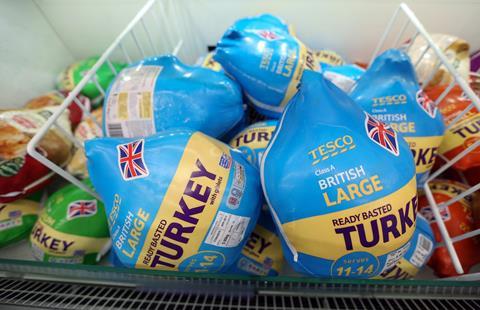
The Christmas price wars
While consumers are opening their hearts to supermarket marketing campaigns this Christmas, their wallets need more convincing.
The cost of living crisis will be keenly felt this Christmas, with more than a third of UK households telling market research platform Zappi they are aiming to cut costs. Some 38% said they plan to prioritise deals and promotions, with a similar proportion planning to spread their food shopping over a few weeks to ease costs, while 40% will shop around for the best prices.
“As consumers enter the third year of the cost of living crisis, it’s essential brands understand how this is impacting holiday plans, traditions and perceptions of brands,” says Zappi founder and CEO Steve Phillips.
Unquestionably, there is a price and promotions battle underway to secure core and discretionary Christmas spend.
Data from NIQ Homescan shows shoppers have enjoyed more savings on their baskets over the past four weeks than during the same period last year – be it through temporary price cuts, loyalty card reductions, bogof or other mechanics.
There is more spend on offer across all categories except fresh produce, which is the same as last year: confectionery is up from 19% to 23%; fmcg is up from 21% to 24%; and household rose from 15% to 22%.
Price wars are also raging in Christmas essentials such as whole turkeys and mince pies. Tesco’s Finest Mince Pies are £3, or £1.50 for Clubcard members, with Lidl responding by dropping the price of Deluxe Mince Pies from £2.19 to £1.49. On frozen turkeys Aldi has dropped prices by 12%, according to analysis by private label expert Richard Harrow. “It seems this manoeuvre is a direct response to Asda’s unexpectedly competitive pricing last year,” he says.
Lidl is mirroring Aldi prices on crowns, Harrow finds, while Sainsbury’s has applied Nectar discounts to its entire range.
“The value of core grocery lines is set between Aldi and Lidl – they’ve set the pace for some time now,” Harrow says. “However, Tesco through its Clubcard and Aldi Price Match has established an improved value position.
“Sainsbury’s also surprises me – typically they were just a bit more expensive but under CEO Simon Roberts they have sharpened their value position.
“The battle for Christmas supremacy is well underway,” he adds.









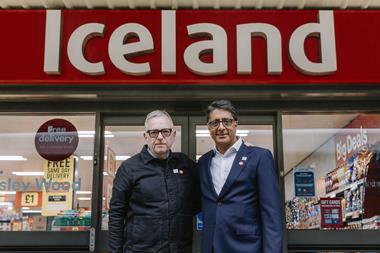









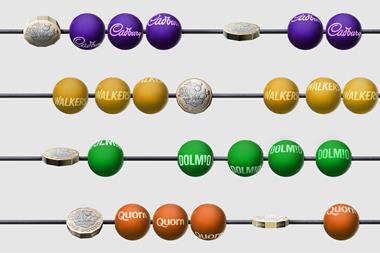
No comments yet